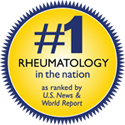Description
The patient places a clip over the nose and breathes through the mouth into a tube connected to a machine known as a spirometer.
- The patient breathes in deeply, and then exhales as quickly and forcefully as possible into the tube.
- The exhale must last at least six seconds for the machine to work properly.
- Usually the patient repeats this test three times, and the best of the three results is considered to be the measure of the lung function.
- The results will help a doctor figure out which type of treatment to pursue.
Preparation
The patient should not eat a heavy meal before the test, nor smoke for four to six hours beforehand. The patient’s doctor will issue specific instructions about whether or not to use specific medications, including bronchodilators or inhalers, before the test. Sometimes, medication may be administered as part of the test.
Risks
The risk is minimal for most people, although the test carries a slight risk of a collapsed lung in some patients with lung disease.
Normal results
Normal results are based on a person’s age, height, and gender. Normal results are expressed as a percentage of the predicted lung capacity. The prediction takes into account the patient’s age, height, and sex.
Abnormal results
Abnormal results mean that the person’s lung capacity is less than 80% of the predicted value. Such findings usually mean that there is some degree of chest or lung disease.


